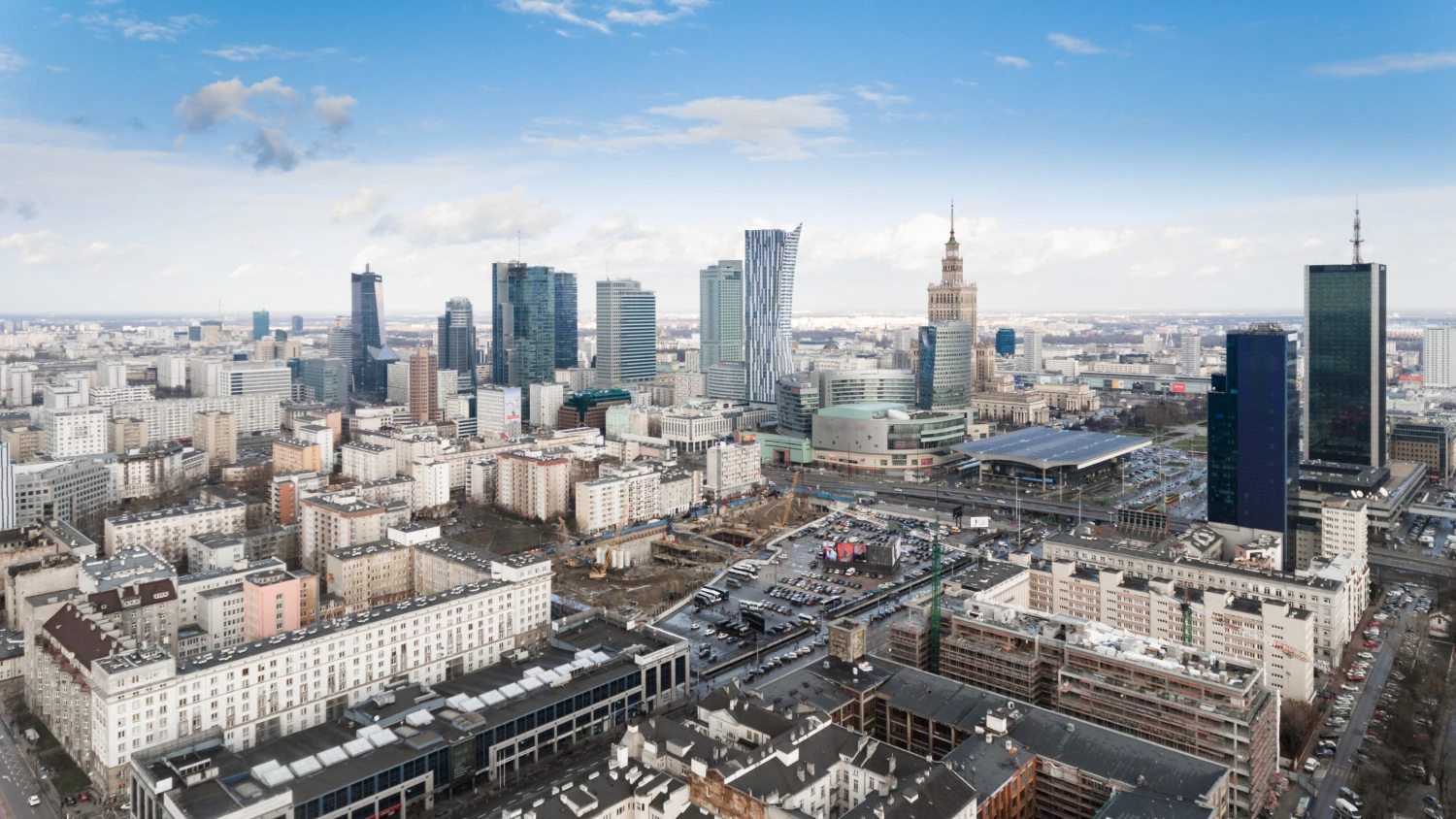
As a result of the COVID-19 pandemic most companies switched to remote work and reduced the demand for office space, which is reflected in Colliers “Warsaw Office Zones Guide” report’s data. Thanks to vaccinations and a reduction in the number of COVID-19 cases, in Q2 and Q3 2021 we have seen a gradual return of employees to offices and an increase in tenant activity in the Polish capital.
The Warsaw office market is divided into ten office zones (CBD, City Centre, East, Jerozolimskie Corridor, Mokotów, North, Puławska Corridor, Ursynów&Wilanów, West, Żwirki i Wigury Corridor) and eight subzones (City Centre: North, East, South, West; Jerozolimskie Corridor: Upper, Lower; Mokotów: Służewiec, Non-Służewiec), which has been included in the report.
More and more offices on the market
Office stock in the capital currently amounts to nearly 6.2 million sqm. The largest zones in terms of existing office space are City Centre (over 1.7 million sqm), Mokotów (1.45 million sqm) and the Central Business District (960,100 sqm).
In Warsaw, since the beginning of 2020, developers have completed nearly 604,200 sqm of office space in 28 buildings. Most of the new supply has been delivered in the City Centre (nearly 433,000 sqm), 96% of which were projects located in the City Centre West subzone. This testifies to the rapid development of the office hub that for tenants and investors has become a new Warsaw landmark. City Centre is also the leader in terms of the amount of space under construction (147,100 sqm).
The CBD is thriving dynamically as well and becoming the third largest zone in terms of modern office supply in Warsaw. At the end of Q3 2021 nearly 116,000 sqm was under construction here, with the highest building in EU – Varso Tower.
“The expansion of the office supply goes hand in hand with the development of public transport, which can be seen, for example, in the City Centre West or the East zone. This is an important factor in attracting potential tenants,” said Anna Laskowska, Analyst in Research and Consultancy Services at Colliers.
Companies opt for City Centre and Mokotów
Since the beginning of 2020, a total of over a 1 million sqm of modern office space has been leased. Tenants most willingly signed agreements for office space located in the City Centre zone (383,000 sqm), of which 66% has been secured in the City Centre West subzone. Second place in terms of demand was attributed to Mokotów (nearly 233,200 sqm), 83% of which was leased in Służewiec.
“We can see that different industries concentrate in different zones. While the financial sector and legal and advisory services are attracted by the prestige of the CBD, Jerozolimskie or Puławska Corridor are often chosen by manufacturing sector companies. Mokotów, on the other hand, is an attractive location for IT, banking & finance, services and transport sector,” said Izabela Kapil, Director in the Office Agency, Landlord Representation at Colliers.
The largest transaction in the period 2020 - Q3 2021 was the lease of 46,500 sqm in Generation Park Y by PZU in City Centre West subzone. Big transactions were concluded also in the CBD office zone (renegotiation of lease agreement for nearly 21,000 sqm in Senator building) and in Mokotów Służewiec (owner-occupier deal in DSV headquarters with over 20,000 sqm of space).
Trend for revitalisation
In recent years, there has been an increasing number of revitalisations of Warsaw's historic buildings for mixed use projects, which are becoming an attractive choice for business locations. One of the leading examples are Elektrownia Powiśle in the City Centre East, which is being used for residential, office and service functions and Hala Koszyki in the City Centre South with office, retail and services purposes.
Spectacular revitalisations also attract tenants to the East zone, which renovated and activated post-industrial areas as Koneser, Soho Factory and Bohema. The other side of the Vistula is becoming an alternative business location with large potential for development of office buildings.
“In a situation where well-prepared plots for investments are becoming scarce, a trend for revitalising existing facilities is gaining momentum in Warsaw. Such initiatives will not only open up historical space in attractive locations to tenants, but will also enliven the urban fabric,” said Izabela Kapil.



